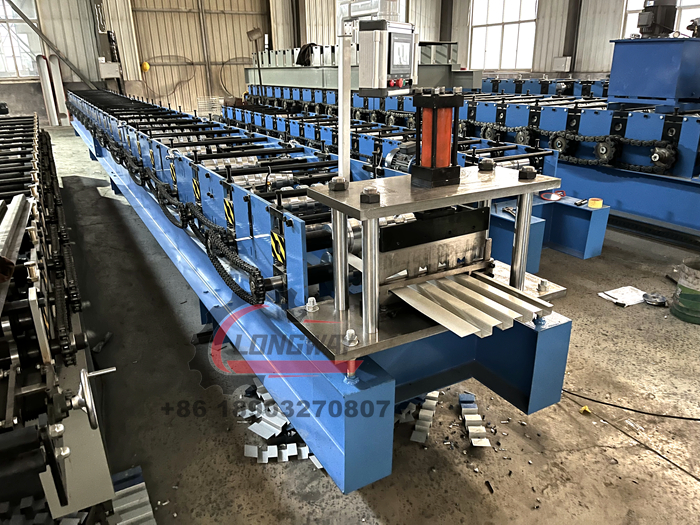angle steel roll forming machine manufacturer
Understanding Angle Steel Roll Forming Machines A Guide for Manufacturers
In the realm of metal fabrication, angle steel is a vital component used across various industries, from construction to manufacturing. The production of angle steel involves a specialized process called roll forming, which requires a specific type of machinery known as an angle steel roll forming machine. This article will delve into the significance of these machines, their operational mechanisms, and what to consider when selecting a manufacturer.
The Importance of Angle Steel Roll Forming Machines
Angle steel is characterized by its L-shape, which provides structural support in a variety of load-bearing applications. The roll forming process enables manufacturers to produce angle steel with high precision and consistency, making it a preferred choice for construction and structural applications. The demand for angle steel has grown exponentially due to its versatility and strength, necessitating efficient production methods.
How Angle Steel Roll Forming Machines Work
Angle steel roll forming machines operate by passing a steel strip through a series of rollers that gradually shape it into the desired angle. This continuous bending process is distinct from other metalworking methods, allowing for high-speed production and minimal waste.
1. Material Feeding The initial step involves feeding a flat steel strip into the machine. This strip is usually made of mild steel or stainless steel, depending on the end application’s requirements.
2. Roll Stations The machine features multiple roll stations. Each stage of rollers incrementally bends the steel into the specified angle. These rollers are meticulously designed to maintain exact specifications, ensuring consistency in the final product's dimensions.
3. Cutting Mechanism Once the angle steel reaches the desired length, an automated cutting mechanism comes into play. This may involve saw cutting or shearing, enabling precise lengths as required by the manufacturing specifications.
4. Finishing Process After cutting, the angle steel can undergo further finishing processes, such as galvanizing or painting, to enhance corrosion resistance and aesthetic appeal.
angle steel roll forming machine manufacturer

Selecting a Quality Manufacturer
When choosing an angle steel roll forming machine manufacturer, there are several critical factors to consider
1. Experience and Expertise Look for manufacturers with a solid track record in designing and building roll forming machines. Experienced companies are more likely to understand the nuances of producing high-quality angle steel.
2. Customization Options Each application may require specific dimensions, tolerances, or production speeds. A manufacturer that offers customization can better cater to your unique production needs.
3. Technology and Innovation Evaluate the technology used in the machines. Manufacturers that invest in modern technology tend to provide more efficient, durable, and versatile machines.
4. Service and Support Post-purchase support is crucial for seamless operation. A reliable manufacturer should offer robust customer service, including installation assistance, training, and maintenance services.
5. Reviews and References Client testimonials and case studies can provide insight into the manufacturer's reliability and product performance. Don’t hesitate to ask for references to gauge the satisfaction level of previous clients.
Conclusion
The angle steel roll forming machine plays an indispensable role in the manufacturing of angle steel, a crucial element in many industries. By understanding the operational dynamics of these machines and knowing what to look for in a manufacturer, businesses can enhance their production efficiency, reduce waste, and produce high-quality products that meet market demands. Investing in a reliable angle steel roll forming machine is not just about initial costs; it’s about the long-term benefits it brings to your manufacturing capabilities. The right equipment can propel your business forward in a competitive landscape, ensuring you meet your production goals with precision and speed.
-
Roof Panel Machines: Buying Guide, Types, and PricingNewsJul.04, 2025
-
Purlin Machines: Types, Features, and Pricing GuideNewsJul.04, 2025
-
Metal Embossing Machines: Types, Applications, and Buying GuideNewsJul.04, 2025
-
Gutter Machines: Features, Types, and Cost BreakdownNewsJul.04, 2025
-
Cut to Length Line: Overview, Equipment, and Buying GuideNewsJul.04, 2025
-
Auto Stacker: Features, Applications, and Cost BreakdownNewsJul.04, 2025
-
Top Drywall Profile Machine Models for SaleNewsJun.05, 2025








